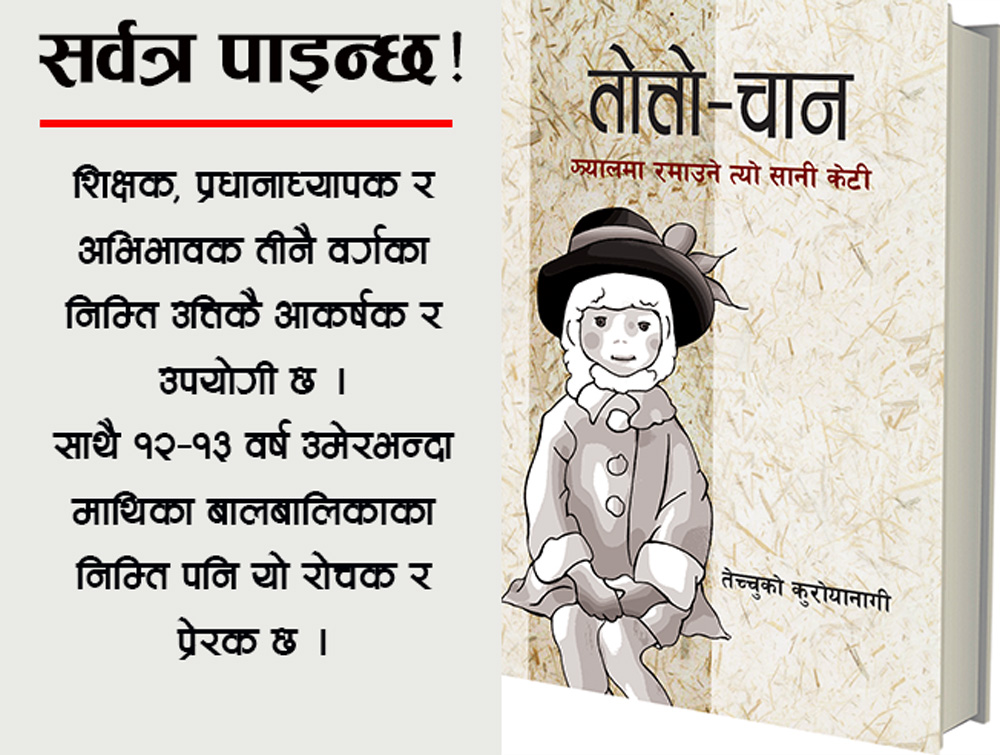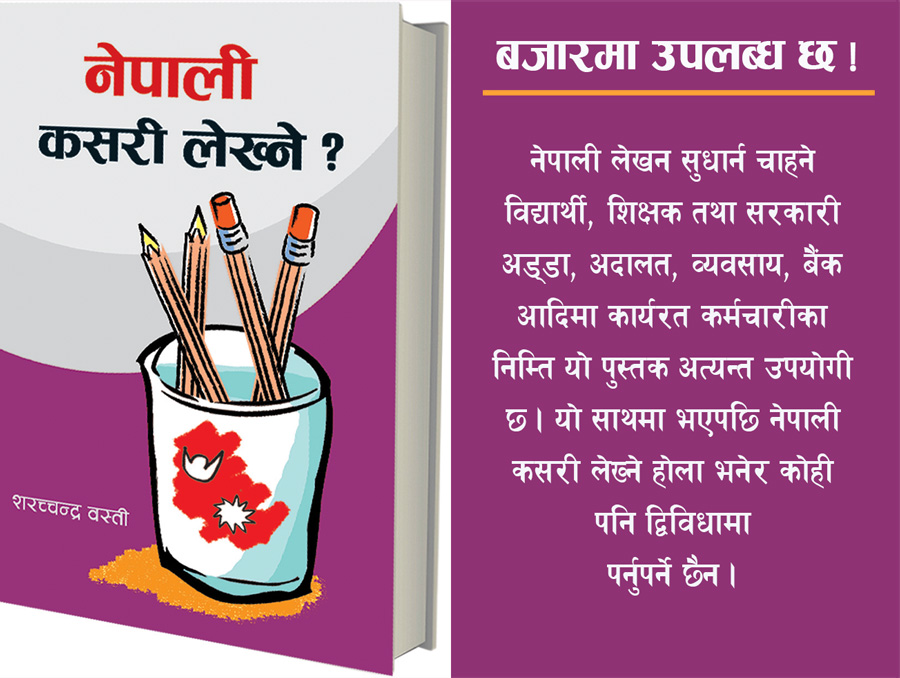Teaching English in a Friendly Manner
English is not as difficult as the teachers of Nepal tend to think. If we use simple techniques in the classroom to teach, English Teaching will become much more interesting.
“English is difficult to teach in the classroom!, Can I use English as a medium of instruction?, My English is very poor”! are some of the concerns that English teachers frequently ask us during short or long term trainings. To answer these questions, we need to think seriously. Sure, there are different ways by which we can teach English easily and in a friendly manner.
The English language is considered as an international language. The importance of English is need not be over emphasized. The English language has no more remained as the only language of British or American. In a sense, it is unilateral in its version and poses a real threat to other languages and cultures.
The spread of English has been well documented in the works of different scholars such as early works of Fisherman, and in the latter works of Kachru (1983, 1985, 1986,1991) Coulmas (1992), Macallen (1989), Crystal (1997) in the international scenario and in Nepal by Awasthi (2010), Bhattarai (2007) etc. English is the most taught foreign language all over the world and most preferred language in the international circle. Here, we can say, English is the medium of linguistic change and transformation in language communities all over the world. It is used in international trade, banking, economic affairs, international tourism, audio-visual cultural products as a relay language, internet communication, international safety, advertising for global bands research and publication. It has certainly served as the most potent language in the course of globalization.
Teaching English in Nepal
Nepal is a multi-racial, multi-cultural, and multi-lingual country. Nepal, though small in size, is spread over Himalayan to Tarai region. English language teaching and training is a difficult proposition. It is a bitter reality that thousands of English teachers who have been teaching in rural or marginalized areas since last many years (some of them have been teaching for last 10 years) are not properly trained. Their standard of English is slightly below the desired level but they need to teach in English as a medium of instruction. They need to be sufficiently motivated to learn English or to teach in English as a medium of instruction.
Teaching English does not only refer to accomplishing given exercises but also enable learners to communicate in English effectively. Some of our students have passed their ten to twelve years life in learning English but they still hesitate to speak English with the foreigners. They feel themselves weak and therefore lack confidence to speak English.
This is where English Teachers role becomes crucial. Given my 11 years of experience as English Teacher, it is my firm conviction that classroom can become an important venue to develop the confidence of learners to interact in English effectively. In other words, classroom English will be very important tool to create an enabling environment. It will help the learner to focus and communication properly in English.
In this exercise the English teacher has to take up multiple roles namely: facilitator, motivator, and creator
In this regard a teacher should keep the following guidelines in mind before entering any classroom.
• Let’s not discourage our students for their poor language or poor pronunciation; rather motivate them towards better English learning.
• Let’s not try to pose as a master of the language inside the classroom, but try to be a friend and facilitator.
• Let’s not speak too much in the classroom, let our students do their work because we have already learnt and they are trying to learn.
• Let’s not put our students in confusion, but provide clear cut guidelines or instructions.
• Let’s not use very difficult English words while teaching, but use simple and clear words appropriate to their level.
• Let’s not answer every questions of our students, let’s give them opportunity to develop their capability or potentiality.
• Let’s not leave our students in a state of confusion, but ensure that clarity has been attained by asking students various terms and concept discussed in the classroom.
The next questions when we teach English might be, at what stage do we need to teach English? How to use classroom English? To answer these questions, the following guidelines may be worthwhile:
Classroom English:
Teaching classroom English is the proper and effective way to teach English at different points during class hours. This will help, at least, to create an enabling environment in the classroom. This classroom English can be used to teach any subject.
It is to be remembered that teaching process also involves learning something from students. When we teach everyday, we are also learning something from our students. By the use of classroom English, a teacher is relieved of pressure. Consequently, students feel less dominated which results in a friendly classroom teaching environment.
We can use English in different stages of teaching a lesson as classroom English to create an English learning environment. The steps below outline a hierarchical order of using English while teaching a lesson.
a) Starting a lesson
When a teacher enters a classroom, following classroom phrases is used frequently.
Teacher: ‘Good morning’/ ‘Good afternoon’
Students: ‘Good morning sir’/ ‘Good afternoon sir’
‘Sit down please’
‘Take out your books/pen/homework’
‘Open your books at page (number)
‘Give me your homework, please.’
The above helps our learners to develop his/her form of requesting, greeting among others.
b) Pronunciation and repetition:
When a teacher pronounces a word, a clause or repeats any sentence, following classroom phrases can be used.
‘Listen’
‘Listen carefully’
‘Listen to me’
‘Listen to me ‘Shyam’
‘Everyone, repeat after me (a word or phrase)’
‘Say it again please!’
‘More slowly’
‘Louder, Please!’
‘Say or repeat the whole sentence please!’
The above phrases ensure participation of our students and would lead to enjoying the lesson as well.
c) Doing activities in class:
When we conduct any activity in the classroom teaching, we can use following phrases:
‘Listen to me!
‘Everyone
‘Girls’ repeat after me.’
‘Boys’
‘(Name of student)
‘Take out your pens.
‘Draw a picture of a(n) object’
‘Copy these words into your notebooks’
(using vocabulary on the board)
‘I want you to do exercise eight’
‘Put up your hand if you have/haven’t completed.
d) Doing individual work, pair work and Group work.
When we ask our students to do the work individually or in pair or in group, following classroom phrases can be used.
Individual work:
‘I want you to work on your own.’
‘(Name of student), come to front, please.’
‘Go back to your seat.’
‘Sheela, could you spell this word?’
Pair work
‘Get into pairs.’
‘Go back to your seats, please!’
‘Compare your answer with your partner.’
‘John and Rita, come to the front, please.’
Group work
‘I want to work in groups of three people.’
‘Get into groups of four
‘Is everyone in a group?’
‘Group No.4, come to front, please.’
‘Go back to your seats.’
‘I need a volunteer from each group to answer.’
‘Pick one person from your group to draw a picture.’
e) Doing Board work:
When we write something on the board, we can use following classroom phrases:
‘Everyone look at the board, please!’
‘Raveen, come to the board, please!’
‘Draw a picture on the board please!’
‘Put your picture on the board.’
‘Underline a word.’
‘Thank you; go back to your seat.’
‘Say it again.’
‘Everyone read these words.’
‘Everyone repeat after me.’
f) Using cassette recorder and video
While using a cassette recorder or a video in classroom, following phrases can be practiced.
For cassette recorder:
‘Let’s listen to the cassette now.’
‘Listen to the cassette.’
‘Can you all hear?
‘Stop talking and listen!’
‘I will play it again.
‘Listen and repeat all together’.
‘Listen and answer and questions.’
For video recorder:
‘Let’s watch the video now.’
‘Can you all see?
‘Put up your hand if you can’t see.’
‘Stop talking and watch.’
‘Watch carefully.
‘Watch and answer the questions.
g) Assessing Comprehension:
During teaching hours, a teacher should not only speak but also assess the comprehension of the learners. When we are teaching any item, we can use the following classroom phrases for assessing their understanding level.
‘What is the right answer?’
‘Has anybody else got an idea?’
‘Tell me (in your language) what you have to do.’
‘Put your idea, if you know the answer.’
‘Any idea to this question?’
h) Classroom control:
When things in the classroom are going well, it is a good idea to begin to use English for simple classroom control. We can give many instruction for the classroom control like:
‘Sit down, please!’
‘Quiet! Please
‘Stop talking’
‘Listen carefully’
‘Are you ready?’
‘John, stand up, please?’
‘Be careful!’
‘Don’t touch.’
i) Teacher Comments:
Mostly, English teachers are worried about the kind of comments to make to their learners. They mostly say ‘Good’ all the time or often they use ‘ok’ but they need to know about other options such as:
‘Excellent’
‘Very good’
‘That’s good’
‘Well done’
‘Great’
‘Marvelous work’
‘Yes, that’s right, good’
‘That’s nearly right- try again’
‘Not quite right- try again’
‘Will you try again?’
j) Ending a lesson
When we end our lesson, we can use following classroom phrases.
‘This is your homework’
‘I want you to do exercise-9
Learn the song
Draw a picture of…..
Learn these new words
k) Leaving the class:
When you are about to come out of the class, we can say following phrases for the pleasure
‘Have a nice day.’
‘Have a great day.’
‘OK, have a good time’
‘See you again.’
‘(If Friday) Well, Have a Great Friday!’
‘Ok. See you next time.’
English is not as difficult as the teachers of Nepal tend to think. If we use simple techniques in the classroom to teach, English Teaching will become much more interesting. Finally, it is worthwhile remembering that teaching English as a medium of instruction equally benefits a teacher as well as students.
(The author is a trainer and a Teaching Assistant at Department of English Education, T.U.)
assapkota@gmail.com



